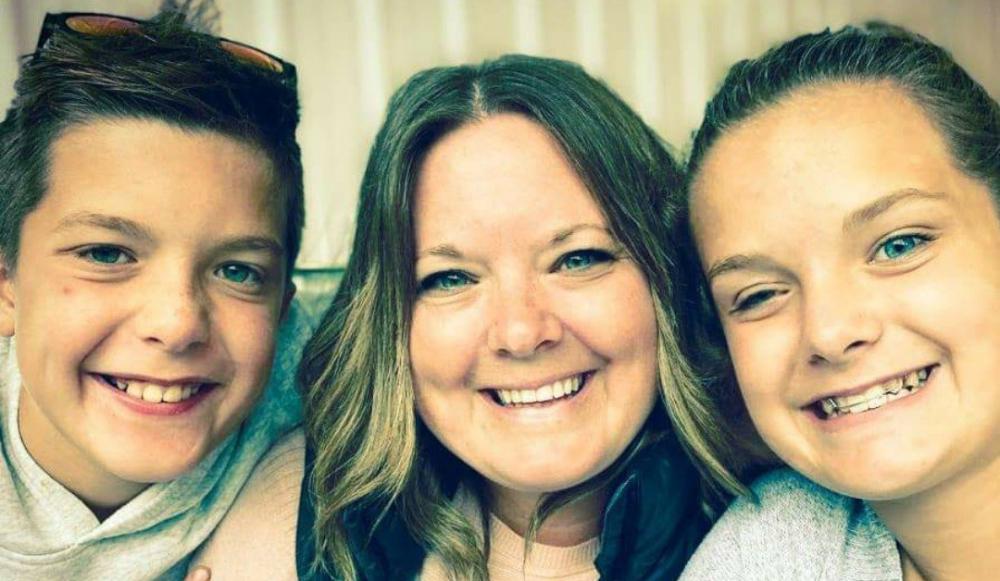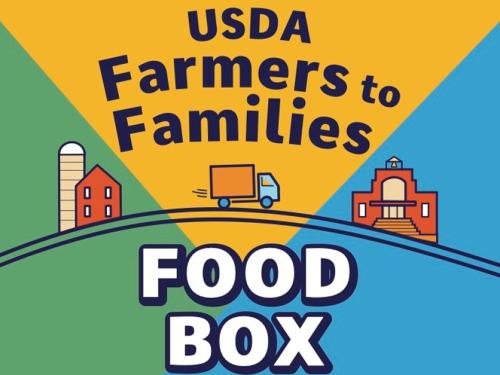
When Working a Full-time Job Can't Cut It
Niki works full-time as a secretary at a New Ulm kindergarten, a job she loves that also allows her to maintain the same schedule as her kids, ages 12 and 14 (the “expensive ages,” as she describes it).
As a one-parent household, she also works a second job organizing the area's youth wrestling team, which her son is a member of. The $300 to $500 that role provided each month served as much of their food budget. That was, at least, until March when the wrestling league and the restaurant where they organized out of shuttered because of the pandemic.
"I have applied for SNAP before, but made just too much money to qualify,” Niki explained. “That made me hesitant to visit a food distribution. What if I'm not eligible? Should I receive this? Don't others need it more?
“Well, my income is down, but all our other expenses are up, so yes, I should. We need this right now. And the experience was so easy, the volunteers were so kind and helpful."

Taking an extended hand when you need the help
Monthly since August, the New Ulm Area Emergency Food Shelf has worked with Second Harvest Heartland to pop-up COVID-safe truck-to-trunk food box distributions, serving more than 500 households each time. This new food resource is part of the USDA Farmers to Families Food Box Program that works to keep families fed while also supporting farmers whose markets have been dramatically altered because of the pandemic.
According to Brad Kirk, executive director of the New Ulm Area Emergency Food Shelf, the food box distributions have been well-received by community, at a time when actual food shelf visits have decreased. More than 40% of households visiting food box distributions have never visited a food shelf, with more than 70% saying they need help stretching their grocery budgets.
“The food provided at these distributions has been a saving grace to help stretch my very slim budget right now,” Niki explained.
Like most food shelves throughout the region, especially in Greater Minnesota, the New Ulm Area Emergency Food Shelf has seen its volunteer workforce reduced by half to limit possible virus exposure. Those who have stayed are great, according to Brad Kirk. They’ve been busy adapting to pandemic impacts, like adding temporary senior programs for those staying home and launching a mobile food shelf.
Getting through the holidays, and winter, on a tight budget
"Winter means bigger utility bills. And holidays are always stressful when you are on a fixed budget,” Niki explained. “But you figure it out. You'll make it through. You've done it before."
"Five years ago, when I became a single mom, I was less confident. I didn't think I could make it work. You just have to keep plugging away. It doesn't pay to stay up worrying."
With 1 in 8 Minnesotans, including 1 in 5 kids, facing food insecurity today, it’s more important than ever that food resources are talked about and accessed. "Reaching out and using resources like these food box distributions is nothing to be ashamed of. Everyone experiences hardships from time to time and options like this can help lessen one's stress load,” Niki went on.
"Life isn't always easy, but it can almost always be much worse. Circumstances don't care who you are, how hard you work, or what it is that keeps you up at night. Everyone falls on hard times at some point and it's okay to take an extended hand that's offering help. My hope is that more people realize there is no shame in taking hold of that hand and that help."
Stand with Niki and the hundreds of thousands of Minnesotans needing help filling fridges this holiday season:
- Spread the word about available food resources near you, and support your neighborhood food shelf, like the New Ulm Area Emergency Food Shelf, if you’re able to.
- Make it okay to access food assistance programs, and share your story if you’ve recently received some help.
